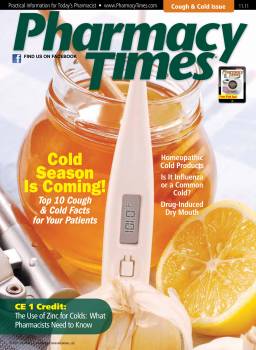Publication
Article
Pharmacy Times
Safeguarding the Use of Suboxone
Author(s):
Errors involving medications for opioid dependence can compromise a patient's treatment.
Suboxone (buprenorphine and naloxone) is an oral treatment for opioid dependence. It is available in 2 dosage strengths, buprenorphine 2 mg with naloxone 0.5 mg, and buprenorphine 8 mg with naloxone 2 mg. The goal of therapy is to treat opioid dependence while minimizing withdrawal symptoms and cravings. Suboxone should be used as part of a treatment program that also includes counseling and behavioral therapy.
In an error report to the Institute for Safe Medication Practices (ISMP) National Medication Errors Reporting Program, a patient had been taking a maintenance dose of “Suboxone 8 mg/2 mg, 1/2 to 1 tablet daily.” With a new prescription, the prescriber was beginning to taper the patient’s dose and ordered “Suboxone 2 mg/0.5 mg, 1 tablet twice daily” with 1 refill. However, the pharmacist dispensed Suboxone 8 mg/2 mg with the previous directions to take one-half to 1 tablet daily. When the patient came back to the pharmacy to obtain her refill, the same error occurred, and Suboxone 8 mg/2 mg, the patient’s previous dose, was dispensed with the direction to take onehalf to 1 tablet daily.
The pharmacy identified a number of factors that potentially contributed to these events, including:
• The prescription was printed on tamper- proof paper intended to prevent photocopying and alteration of the prescription. The pharmacist involved in the error indicated that the tamperproof attributes of the paper contributed to a poor image quality when the prescription was scanned into the pharmacy computer system.
• The pharmacy’s policy required that all papers for controlled substances be handled by a pharmacist. This often resulted in the same pharmacist completing order entry, selection, and verification of a controlled substance without an independent double check.
• The patient was a longtime customer of the pharmacy; it appears detailed counseling did not take place.
• The design of the pharmacy-generated label was such that the drug name and strength blended in with the rest of the information, and therefore may have been overlooked during final verification.
Safe Practice Recommendations
Errors involving Suboxone can result in the interruption of medically supervised withdrawal or the introduction of withdrawal symptoms and cravings that could undermine treatment. It is critical that pharmacies take steps, such as those listed below, to safeguard the processes used to dispense Suboxone.
• Tamper-proof prescriptions may scan with watermarks and therefore be difficult to read on computer screens. Check scanned images before filling prescriptions. If the scanned image cannot be made clear of background image noise, keep the hard copy prescription with the computer-generated label through the verification stage. • Visually differentiate the strengths and formulations of Suboxone on computer screens to avoid selection errors during order entry.
• Work with the pharmacy computer system vendor to modify the label format to meet the recommendations found in ISMP’s “Principles of Designing a Medication Label for Community and Mail Order Pharmacy Prescription Packages.” Specifically, change the font size of the drug name and strength to differentiate it from the rest of the label. To view the guidelines, go to: www.ismp.org/tools/guidelines/labelFormats/comments/default.asp.
• Consider adopting a policy that would allow a certified technician (or second pharmacist) to perform data entry of prescriptions for controlled substances. This would allow the verification pharmacist to perform a true independent double check.
• Therapy goals for Suboxone treatment can be challenging. Communicating with and educating the patient at the point of sale can reinforce patient compliance and ease patient anxiety. During this communication, take the medication out of the bag, identify the medication by name and strength, and review the directions for use with the patient.
• Pharmacists who dispense Suboxone should have frequent interactions with the prescriber in order to fully understand the taper schedule being prescribed. PT
Dr. Gaunt is a medication safety analyst and the editor of ISMP Medication Safety Alert! Community/ Ambulatory Care Edition.







